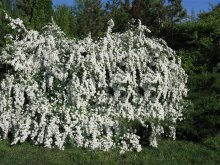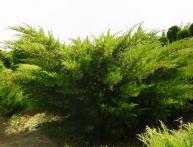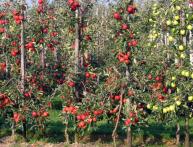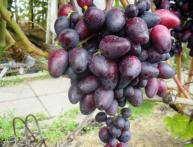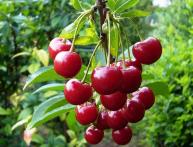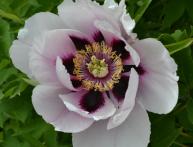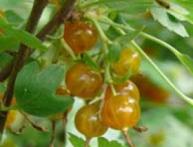The spirea in the photo is so different, but always magnificent!
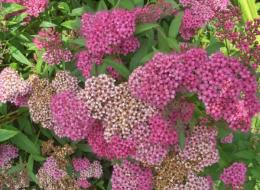
When I decided to look for information about spirea, I was surprised that it turned out that I had already known this plant for quite a long time, but under a different name - meadowsweet. And only recently I discovered that in fact, only herbaceous plants can be called meadowsweet, while spirea is a shrub.
This plant (spirea in the photo) is a shrub, the branches of which are covered with bark, so spirea can no longer be classified as herbaceous plants. This is a perennial shrub; in recent years, it has been planted very often in summer cottages, in public gardens, in parks, and along alleys.
Content:
Types and varieties of spirea
It is immediately worth noting the fact that there are many types and varieties of spirea, which is why it has become so popular. Moreover, sometimes you won’t even realize right away that this is the same plant in front of you - their appearance, the shape of the leaves, and the color of the flowers can vary so much.
Firstly, the species difference begins with the fact that the shape of the bush in plants can differ quite significantly. In addition, the size of the plant can vary: from small bushes to huge ones. The second main difference is the timing of spirea flowering depending on the variety or species. That's exactly why spirea It will look great in the garden!
After all, you can plant different types of it on your site and enjoy wave-like flowering: some varieties have faded, but others have begun to bloom behind them.
It is also encouraging that early-flowering varieties of spirea can delight the eye with flowering already at the end of May, and late-flowering varieties stand strewn with flowers until frost! Truly spirea is an excellent garden decoration all year round!
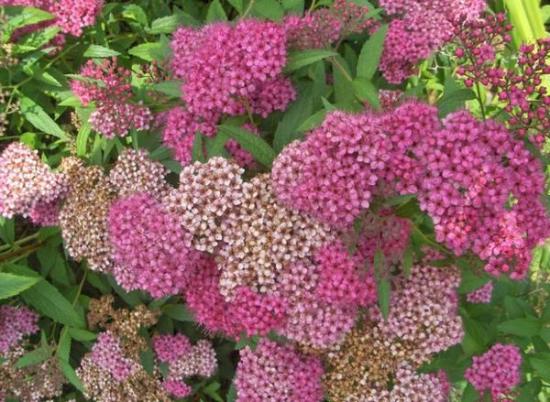
If we talk about the variety of forms of this plant, then one cannot help but admire the variation in the color of its flowers: from boiling white to soft and rich pink. In addition, inflorescences can have different shapes: pyramidal, paniculate, and cone-shaped. All types and varieties of spirea are honey plants, so your garden will always attract a lot of pollinating insects and nectar collectors.
Spirea care
Looking at all this splendor (spirea in the photo), it may seem that spirea will require very complex care. But that's not true. In fact, this shrub is quite unpretentious and does not require a lot of effort in care.
In order for plants to be comfortable on your site, they will need the following conditions:
- good lighting;
- loosening the soil;
- fertile land;
- good drainage, preventing water stagnation;
- fertilizing three times per season;
- winter shelter for tender varieties and young plants.
These, in fact, are all the simple requirements that ensure good growth, development and flowering for the spirea shrub. It’s not at all difficult to provide such care, you’ll agree.
But when caring for spirea, there is a main necessary step that can scare off many gardeners - pruning.
Moreover, pruning should not be chaotic, where it sticks out, but correct.
How to prune spirea correctly
It is easiest to prune the varieties and types of spring-blooming spireas.They only need to remove dead, old (more than 5 years old), frozen in winter, and broken branches. Branches on spirea need to be trimmed after flowering so as not to remove shoots that have just faded.
If this is done, rapid growth of lateral processes will occur, which will lead to the crushing of inflorescences. In addition, the shape of the bush may change unsightly: the branches will no longer beautifully fall to the ground.
Spireas that bloom in the summer months should be pruned in the spring. But it is better to leave young plants alone for now, and pruning is carried out only on those bushes that are at least 3-3.5 years old. Such bushes need to be pruned so that only 20-30 cm of shoots remain from the ground. This way a neat and beautiful bush is formed. If you feel sorry for pruning the bushes so much, then, alas, nothing good will come of them: the young shoots will be very thin, the flowering will be sparse. Therefore, you need to spare no pruning to cut the spirea bushes short.
How to propagate spirea
To propagate spirea, you can use seeds, layering and cuttings. But when propagating by seeds, you need to carefully study the varieties of your plants, since some of them are not recommended to be propagated by this method due to the heterogeneity of seedlings.
The best method of propagation, which allows you to fully preserve all the species and varietal characteristics of the plant, is propagation by cuttings and layering.
Cuttings You can cut both from the middle part of the branches and from the apical part. The length of the cuttings must be at least 10 cm. The cuttings can be planted immediately in the ground, after dipping their tips in a root formation accelerator. Usually, cuttings planted in this way in the middle of summer give good roots by autumn.
It is even easier to propagate spirea by layering: you need to bend the shoots to the ground in the spring, secure them better and sprinkle them with earth. With regular watering of these places, you can get new plants by autumn or next spring.

